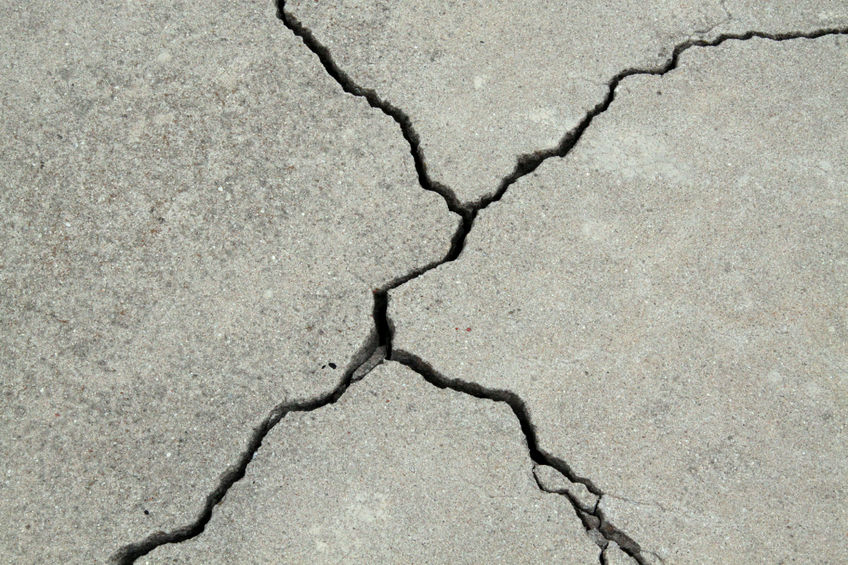| University of Colorado at Boulder | ||||||||
 |
||||||||
|
If oil and gas activities are causing earthquakes, who is responsible for property damage and injuries? What financial assurances are required to protect the public? Can individuals protect themselves with earthquake insurance? With or without insurance, what recourse do individuals have through the courts? Financial AssurancesA “financial assurance” is a financial guarantee made to ensure, with a high level of confidence, that either a certain action (such as remediation or reclamation of a site) will be taken or to protect third parties from events (such as contamination of fresh water sources) that might be consequences of activities on a site. Regulatory agencies could require financial assurances to protect against problems at an injection well site. Such problems might include off-site seismic events induced by the wastewater injection activities. The term financial assurance is sometimes used interchangeable with terms such as financial security, surety, and liability insurance coverage. However, insurance and assurances are, in fact, different types of protection against harmful effects an activity could cause. Similar to liability coverage on a vehicle, liability coverage for a Class II injection well covers bodily injury and property damage for injuries to persons or property caused by the drilling, operation or plugging of a well. Financial assurances operate in a similar manner, but are typically bonds or guarantees held by the overseeing regulatory agency rather than by an insurance company. Financial assurances do not require an insurance policy to be in place in order to cover the damage that might have been caused by a certain activity. Regulatory agencies are often flexible in the type of guarantee they will accept. Types of financial assurances can include a surety bond, a letter of credit, a certificate of deposit, cash, or an annual fee. When a company or entity completes an activity to the regulatory agency’s satisfaction, financial assurances can be returned or released back to the company. When are Financial Assurances Required?Class II disposal wells can be administered through the federal government’s Environmental Protection Agency (EPA) or through an individual state’s approved regulatory program. See Regulating Underground Injection. Many jurisdictions require operators to demonstrate and maintain financial responsibility paperwork prior to drilling or operating a UIC Class II disposal well. The federal government requires financial assurance to be provided for wells administered by the EPA, through federal regulations 40 CFR § 144.28. Most state-administered programs also require financial assurance. Arkansas, for instance, requires all permit holders for commercial Class II disposal wells, as well as permit holders of brine production wells, Class V brine disposal wells, enhanced oil recovery injection wells, as wells as other types of wells or exploratory holes or wells, to submit proof of financial assurance for the designated well when applying to drill the well or applying to transfer ownership or operations of the well. Colorado also requires proof of financial assurance prior to drilling or assuming operations of a Class II commercial injection well. See the IS Regulatory database (coming soon) for financial assurance requirements of several states. Litigation and Private InsuranceWhere government imposed financial assurances do not compensate individuals for damages, they might turn to the courts for compensation. The judicial response to IS is, however, still in its early stages. Some cases have involved parties who thought they were protected by private insurance; others address more general questions of liability. A survey of court cases involving IS found 23 cases in three states (AR, OK, TX,) and one federal Jurisdictions. [Click here for summary table of cases] Generally IS claims are a package of tort claims, including negligence, nuisance, trespass, strict liability, and a call for a determination of operation of injection wells as being abnormally dangerous or ultrahazardous. As of July 2017, all IS claims have either been dismissed, settled, or are pending. While The Oklahoma Supreme Court has made a ruling on proper jurisdiction for private tort claims involving IS in Landra v. New Dominion, the actual merits of the claim are still being adjudicated at the state’s district level. The process of developing common law around a new class of issues is a slow process, but as courts begin to tackle these kinds of claims we can draw out key elements and factors that shape the redressability of IS-related claims. Determining JurisdictionPrior to a court ruling on a claim involving IS, the courts may need to designate the proper arena for redress. The Oklahoma Supreme Court did this in 2016 when it ruled that the Oklahoma District Court has jurisdiction to address private tort claims where the underlying problem of the claim is seismicity caused by oil and gas operations. In its Landra ruling, the Oklahoma Supreme Court stated that this “conforms to the long-held rule that district courts have exclusive jurisdiction over private tort actions when regulated oil and gas operation are at issue.” A year later the Sierra Club filed a federal lawsuit in the U.S. District Court for the Western District in Oklahoma City (Sierra Club v. Chesapeake). This was the first seismicity lawsuit brought in federal court. The U.S. District Court dismissed the claim stating that seismicity regulation should be left in the hands of state agencies and courts. The U.S. District Court for the Western District in Oklahoma City stated that “The challenge of determining what it will take to meaningfully reduce seismic activity in and near the producing areas of Oklahoma is not an exact science, but it no longer one of black arts. This Court is ill-equipped to outperform the Oklahoma Corporation Commission in advancing that science and putting the growing body of technical knowledge to work in the service of rational regulation.” In its decision, the U.S. District Court explained that “abstention is permitted where the exercise of federal review of the question. . . would be disruptive of state efforts to establish a coherent policy with respect to a matter of substantial public concern.” The Court then reasoned that “seismicity is a substantial public concern” and subsequently dismissed the federal claim brought by Sierra Club. Currently, Oklahoma is the only state where its court system has designated the proper arenas for redress for any types seismicity claims. Oklahoma’s Public vs Private DistinctionLadra and Sierra Club taken together illustrate the bounds of court influence on matters involving IS. On one hand, the Ladra courtexplains that district courts have exclusive jurisdiction over private tort actions when regulated oil and gas operation are at issue. The Ladra court explained that the statutory grant of exclusive jurisdiction to the Oklahoma Corporation Commission to regulate oil and gas exploration and production activities in Oklahoma is not the jurisdiction to afford a remedy to those whose common law rights have been infringed by either the violation of these regulations or otherwise. This follows the general theory of a tort being a civil wrong that unfairly causes someone else to suffer loss or harm resulting in legal liability for the person who commits the tortious act. On the other hand, the Sierra Club court explains that when the matter is of public concern, such as altering regulations, the court should not be disruptive of state efforts in addressing such concern. The Sierra Club decision reasoned that the Oklahoma Corporation Commission has “responded energetically to that challenge” and thus any court influence on the matter would be disruptive of Oklahoma’s effort to establish a coherent policy regarding IS. Characterizing Disposal ActivitiesCourts are also being asked to determine whether operation of disposal wells is an abnormally dangerous or ultrahazardous activity. When an activity is characterized as abnormally dangerous or ultrahazardous, the actor (operator) may be held strictly liable for the harm, even if the actor has exercised reasonable care to prevent that harm. Currently, Oklahoma has nearly a dozen cases pending that, among other claims, are seeking this determination. Most of these cases are brought by claimants seeking an affirmative determination for purposes of their strict liability claim, but defendant operators in one case have counterclaimed for damages by seeking a court determination that its operation of injection wells is not ultrahazardous. As of June 2017, no state has ruled on whether the operation of disposal wells is abnormally dangerous or ultrahazardous. This determination will eventually shape the outcomes of many pending Oklahoma cases and effectively determine the validity of a claimant’s strict liability IS claim. Insurance Claim LitigationThere have only been a couple cases involving IS insurance claims and they are both pending in Oklahoma. One pending case, West v. ABC Oil Company, Inc., is a class action lawsuit where plaintiffs are asking the Court "to order Defendants to pay earthquake premiums as they are incurred in the future" and also "to award back insurance premiums." The class action is on behalf of "Oklahoma residents who own real property in Oklahoma for which they have either purchased earthquake insurance or for which they desire to purchase such insurance, but have been unable to afford to do so." The other pending case, Certain Underwriters at Lloyd’s v. New Dominion, was brought forward by an insurance company. New Dominion’s insurer filed suit claiming that its insurance policy does not cover the earthquake damage claims. In its claim, New Dominion insurer is seeking a determination and declaration that there is no coverage under the Site Pollution Liability Policies. The policies provide insurance coverage for "pollution conditions discovered, or claims first made and reported" during the policy period, and pollution conditions are defined as "the discharge, dispersal, seepage, migration, release or escape of pollutants.” The insurers argue that "None of the allegations set forth in the complaints and/or petitions assert that any of the alleged damages resulted from 'a pollution condition.'" The insurers additionally argue that the water injected into wells that allegedly caused the earthquakes is not a “pollutant” as defined by the Policy and that the injuries alleged in the Earthquake Actions do not “result from” any “pollution condition.”
|
||||||||


 Seismic Damage
Seismic Damage